Here’s something you probably know but might not think about often enough—your customers probably won’t know how to use your SaaS product without help.
And that isn’t necessarily linked to the quality of your product. It can be the best in the market, but still complex and overwhelming to some users.
That’s why educational content is crucial. By providing it, you ensure that the users have what they need to get the most value out of your product and keep using it.
But you can create and give access to many types of educational content. We’ll go through the best types in this article, so keep reading.
In-Product Guides
One of the most convenient and efficient ways to educate your product users is to provide them with educational content within the product itself.
That’s what in-product guides are all about—showing users how to use the product while they are immersed in it and encouraging them to follow the advice and instructions right then and there.
For example, take a look at the helpful pop-up in Slack that concisely explains a recently-added feature.
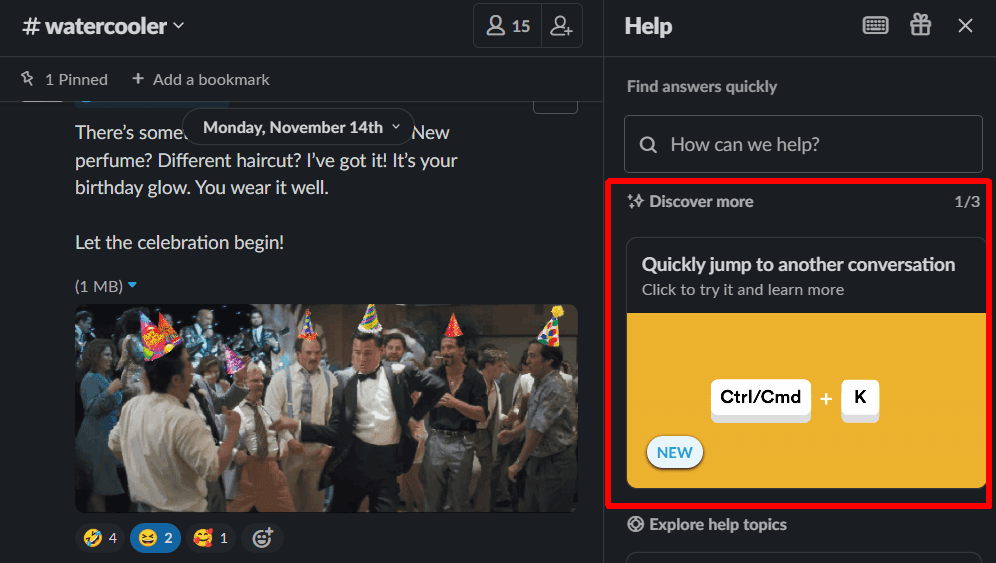
Source: Slack
As you can see, it contains only one sentence, one picture, and an invitation to try out the feature and learn more about it.
It’s unobtrusive and discreet while still being helpful.
Those are also the qualities of good tooltips. Tooltips are small elements of the user interface that display brief text when a user hovers over a specific element on the screen or clicks on it.
As Hilal Yildrim, growth marketer and content writer, explains, there are certain qualities that a tooltip should have to be helpful to users.
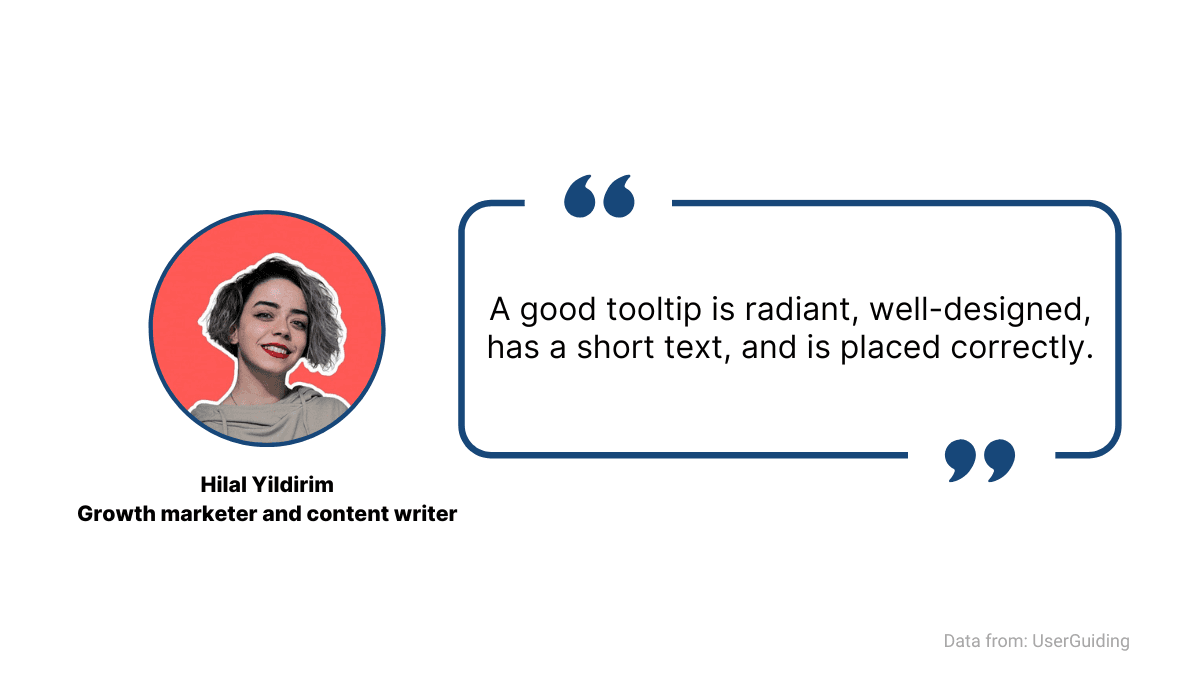
Source: Archbee
When tooltips are formatted like that, they are an indispensable part of a great in-product guide and make the educational content straightforward and easy to understand.
For instance, take a look at the example from Genially, a platform for creating interactive content.
It’s a tool with many features and options, so an in-product guide is necessary to onboard new users and show them what they can do with it.
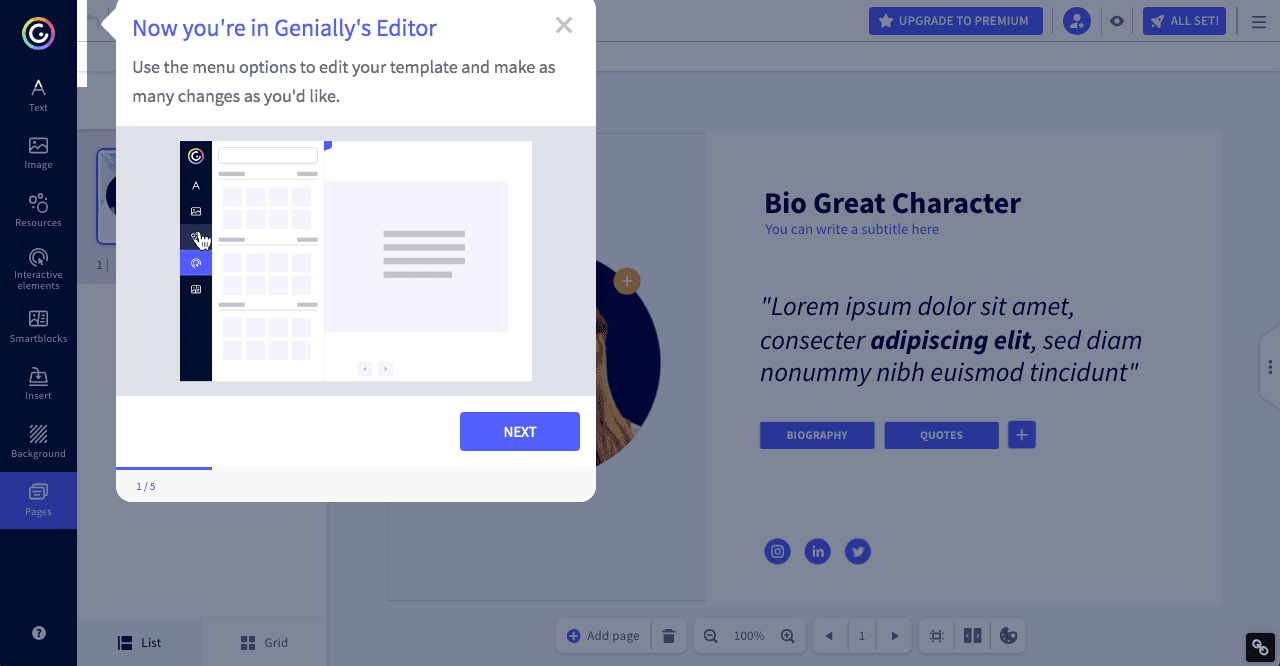
Source: UserGuiding
They rely on tooltips like the one you can see above.
It’s well-designed, brief, clear, and conveniently placed—just as we mentioned it should be.
In-product guides like that are immensely helpful for educating users. Don’t underestimate their usefulness.
Product Documentation
This is another must-have type of educational content every SaaS company should offer its customers.
Product documentation contains everything a user needs to know how to use the product successfully.
Since SaaS companies offer software products, that kind of a knowledge repository is undoubtedly helpful for educational purposes.
Just think about it. Software is usually complex, and users can benefit from instructions on how to set it up, use the basic and the advanced features, troubleshoot problems, etc.
That’s why you should create a single source of truth about the product. You can organize it in a knowledge base as Skype did.
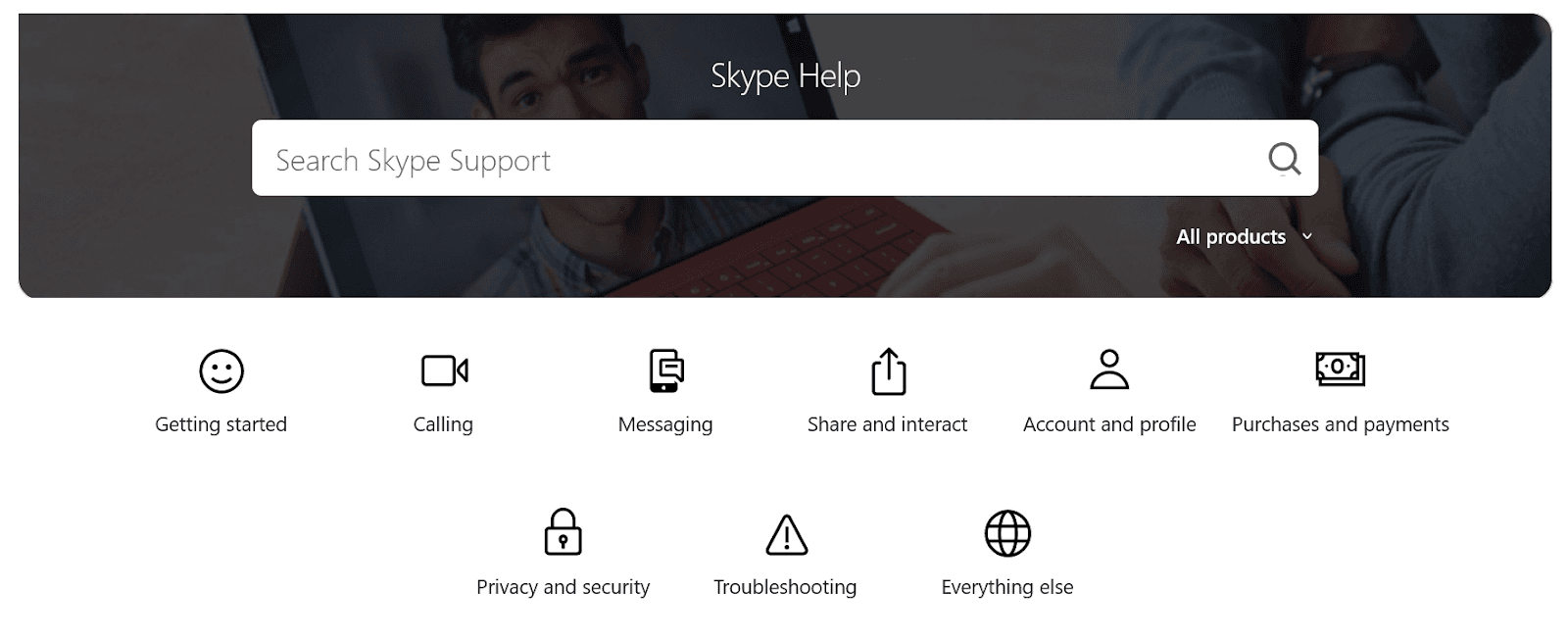
Source: Skype
Thanks to the product documentation they put in there, users can get the information they need at any time, look for answers to their questions, and learn how to use the product on their own terms.
Since product documentation is aimed at user education, it’s best to keep it simple and concise whenever possible.
For instance, the instructions in Skype’s knowledge base are often presented step-by-step.

Source: Skype
Whether it’s about basic functions or advanced features, an approach like that can help users learn about the product with ease.
If you want to create and store product documentation in an easy-to-use and accessible repository, you can use Archbee.
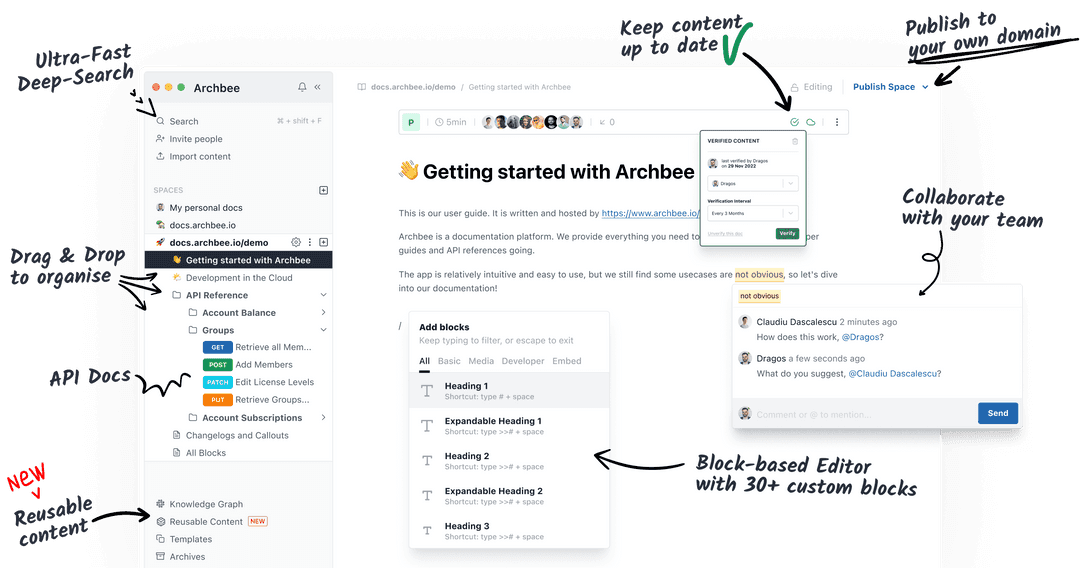
Source: Archbee
With Archbee, you can provide your users with an organized and practical resource of product information.
Its features allow you to maintain, publish, and update documentation effortlessly, so your users can have all the educational content at their fingertips.
Videos
Using videos to educate users is a great way to provide engaging and information-filled content.
Videos are so effective because they offer visual and auditory stimuli that, for example, a textual how-to guide just can’t.
In addition to that, thanks to smartphones and other mobile devices most customers use every day, videos are an easy way to consume information anytime and anywhere.
It’s no wonder that videos got the most votes in the HubSpot Content Trends Survey as the type of content consumers want to see more of.
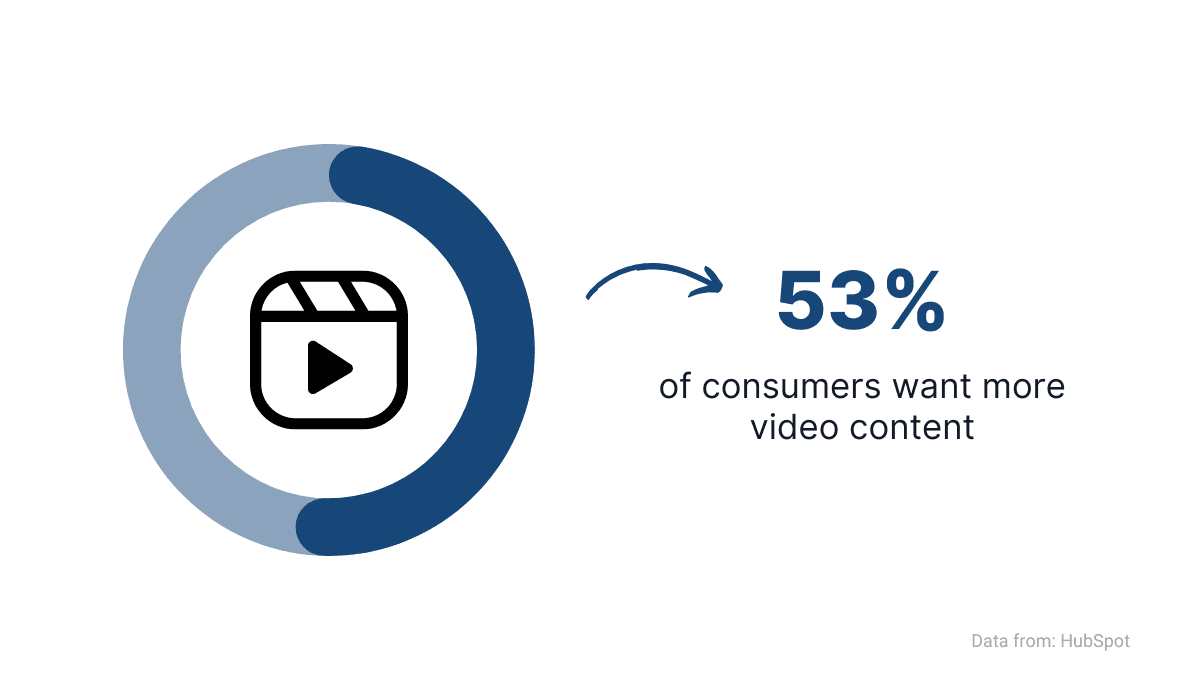
Source: Archbee
You should use that preference for videos to your advantage and use them to educate your customers.
They can be only a few minutes long and explain a basic concept, or they can be longer and more in-depth.
For instance, Canva uses the versatile nature of videos to create various tutorials and other instructional content for its YouTube channel.
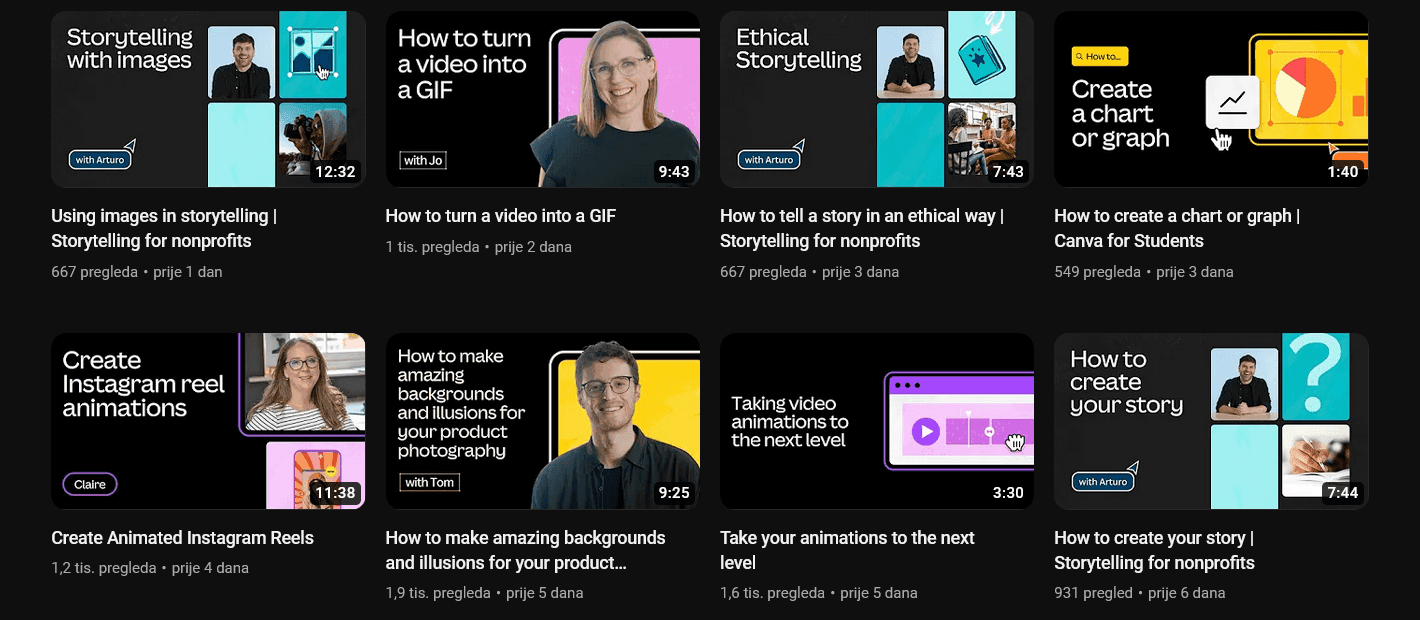
Source: Canva on YouTube
They range from hour-long explainer videos like the one about packaging design to very short ones.
Below, you can see a video on designing with Brand Kits that is only 1:20 minutes long.
Source: Canva on YouTube
However short or long you make the videos, they are a great way to present educational content.
The video above takes very little time to watch. On the other hand, it would take at least several paragraphs to present the same information in a textual how-to guide.
To sum up, videos are a practical and engaging type of educational content.
You can fill them with useful information and ensure that your users get a lot of value in a visually attractive package.
Webinars
There are many ways to provide educational content to your users. However, webinars offer unique benefits you shouldn’t overlook when creating your educational program.
In webinars, users get the opportunity to gain the knowledge they need from an expert.
In the case of a SaaS product, that’s usually a company representative that knows the product inside and out.
Depending if the webinar is recorded or live, customers can interact with the expert, ask questions, see demonstrations of product features, etc.
That’s a great opportunity to see the product in action, and users can learn a lot about how it can benefit them and bring them value.
A testament to how effective webinars can be is a stat cited on Zippia. According to them, 15% of people who attend a webinar end up purchasing the related product.
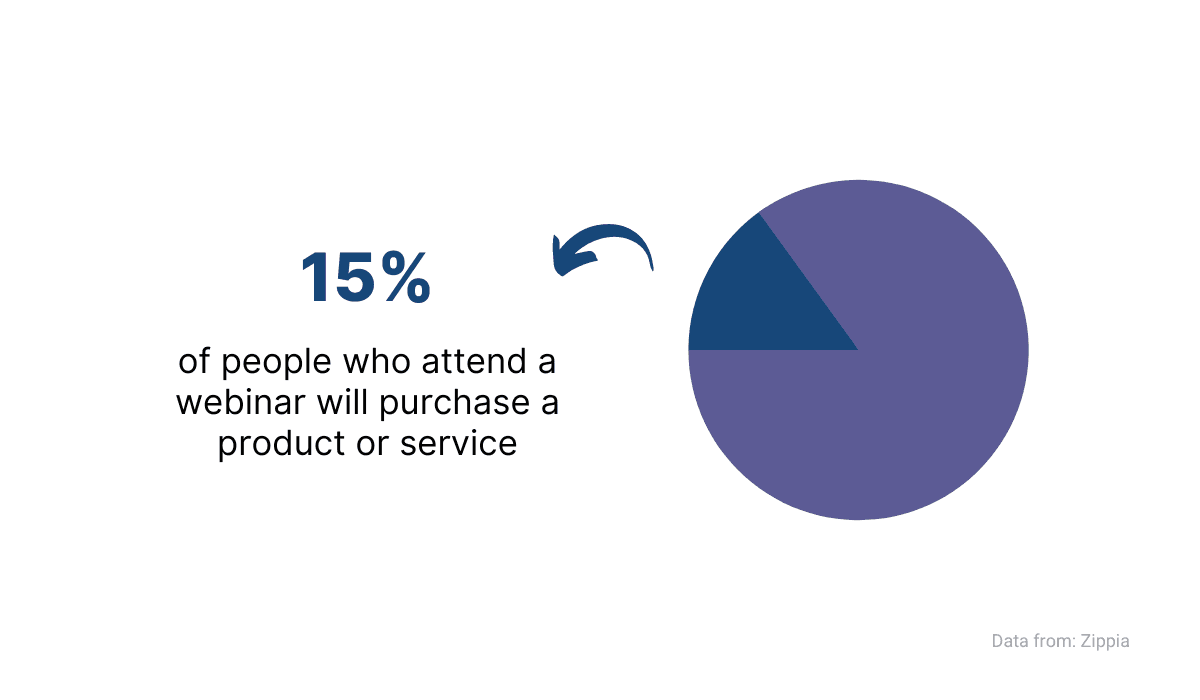
Source: Archbee
However, although they can help increase sales numbers, it’s important to keep webinars primarily educational.
Bragging about a product and pushing it on users can backfire and scare them off.
On the other hand, if a webinar host demonstrates the product’s value through its use, offers a unique insight to the users, and establishes the product as a solution to their problems, an obvious sales pitch isn’t necessary.
You can even get experts that will talk about subjects related to your product but not demonstrate the product itself.
For instance, Custify is a platform that aims to reduce churn and improve onboarding customers.
In their webinars, they talk about those subjects and not necessarily about their software.
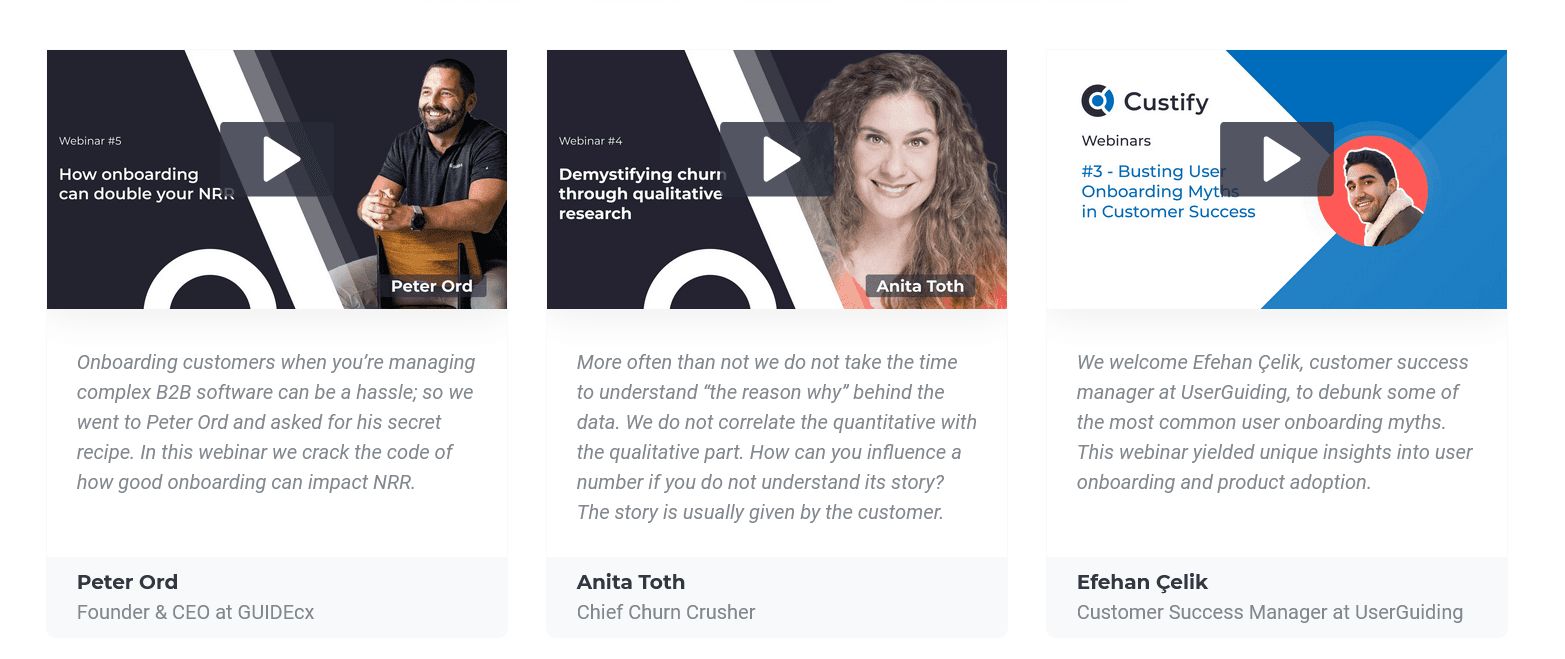
Source: Custify
That way, they educate the webinar attendees about the things that the product they offer is used for.
And when the users get more educated about that field, they will be able to see more clearly how the product can help them achieve their goals.
Courses
For many users, it’s important that the educational content is easily accessible on their terms so that they can consume it when they can and at the pace they’re comfortable with.
That’s one of the characteristics of online courses that makes them a valuable type of educational content to offer users.
Online courses provide a structured way of learning. They’re usually divided into lessons so the user can learn step-by-step and gradually accumulate product knowledge.
For example, Hootsuite has online courses in their Hootsuite Academy that can be free or paid, depending on whether the user wants a certificate after completion.
Below, you can see the structure of their course about the fundamentals of Hootsuite.
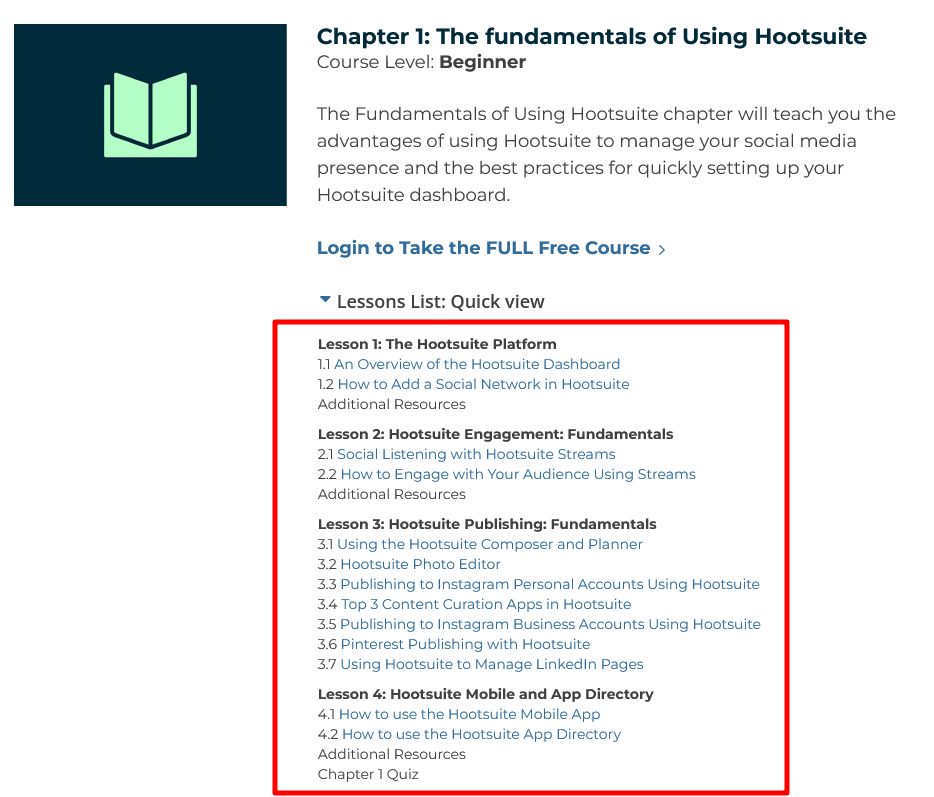
Source: Hootsuite
As you can see, they cover a lot of ground, so dividing the course into manageable lessons is crucial.
Otherwise, having a course that’s one three-hour long lesson will most likely deter a good portion of users from even starting it.
On the other hand, courses can be short, like those from Later, a social media management platform.
They have free courses that take around 15 minutes to complete, so there’s no need to divide them into structured lessons.
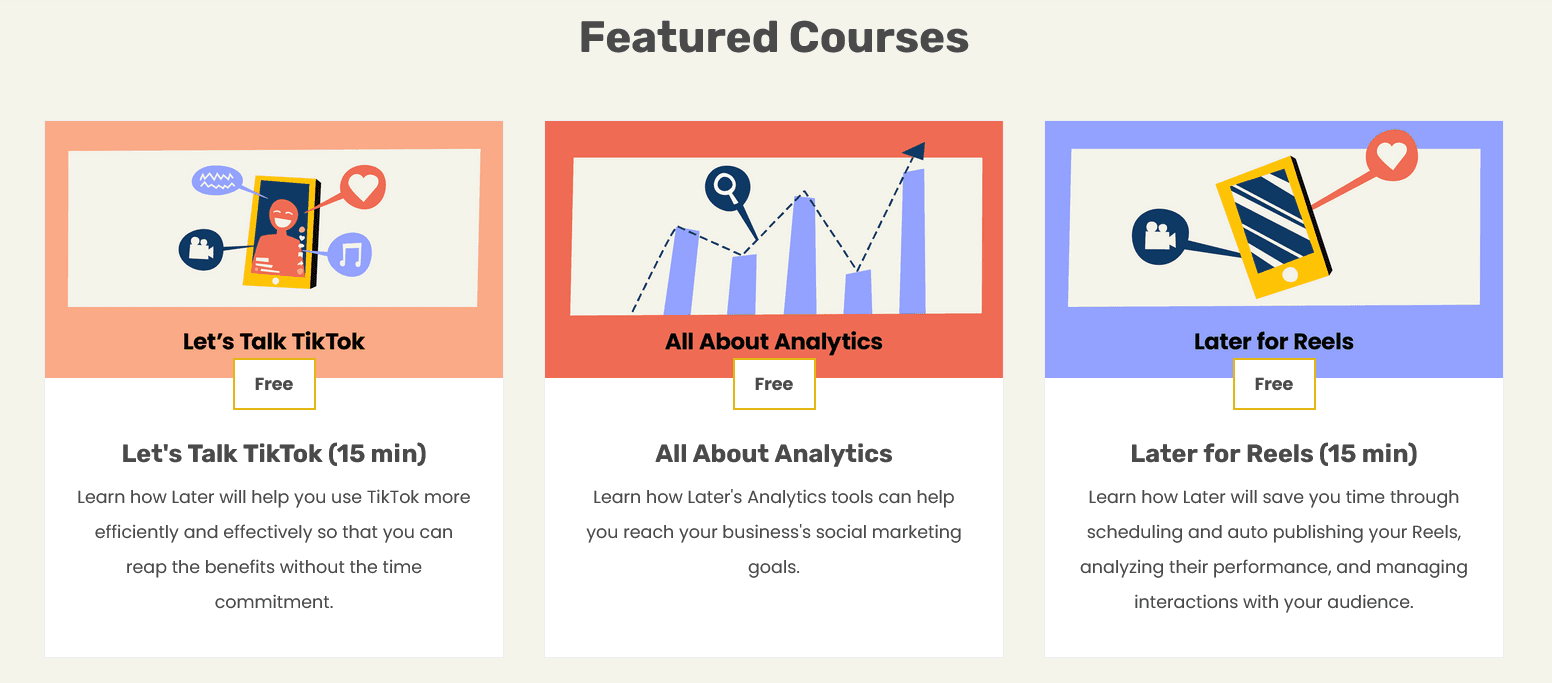
Source: Later
Regardless of the structure and duration, courses are an engaging and flexible type of educational content that can appeal to many users.
Emails
If you’re looking for a type of educational content for your users that requires little effort on their part, while being customizable to fit the knowledge level of various user segments, emails are the right fit.
With emails, you can deliver educational material to your users’ inboxes, so they don’t have to do anything but open them, read them, or follow a link you sent them.
It’s also convenient for them because, thanks to mobile devices, emails are available anytime and anywhere, and so is the educational content in them.
Furthermore, as we mentioned, you can use emails to educate various user groups.
For instance, you can create a series of onboarding emails that will show your new users what your product can do and how they can access and use its most notable features.
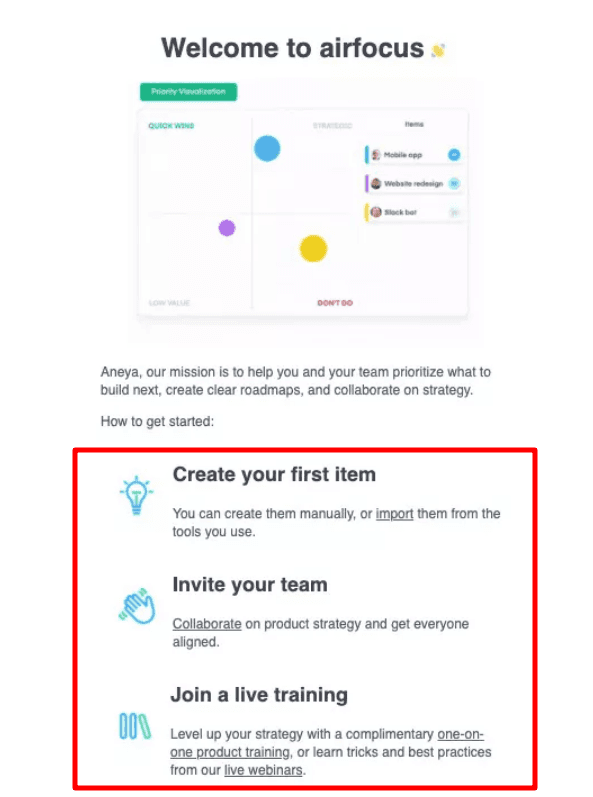
Source: Userpilot
Above, you can see an onboarding email from Airfocus.
In addition to a welcoming message, they included tips and links to more resources and features for newbies to start with.
On the other hand, you can use emails to educate your more advanced users on some features they might have missed.
For example, take a look at the email from Pinterest below.
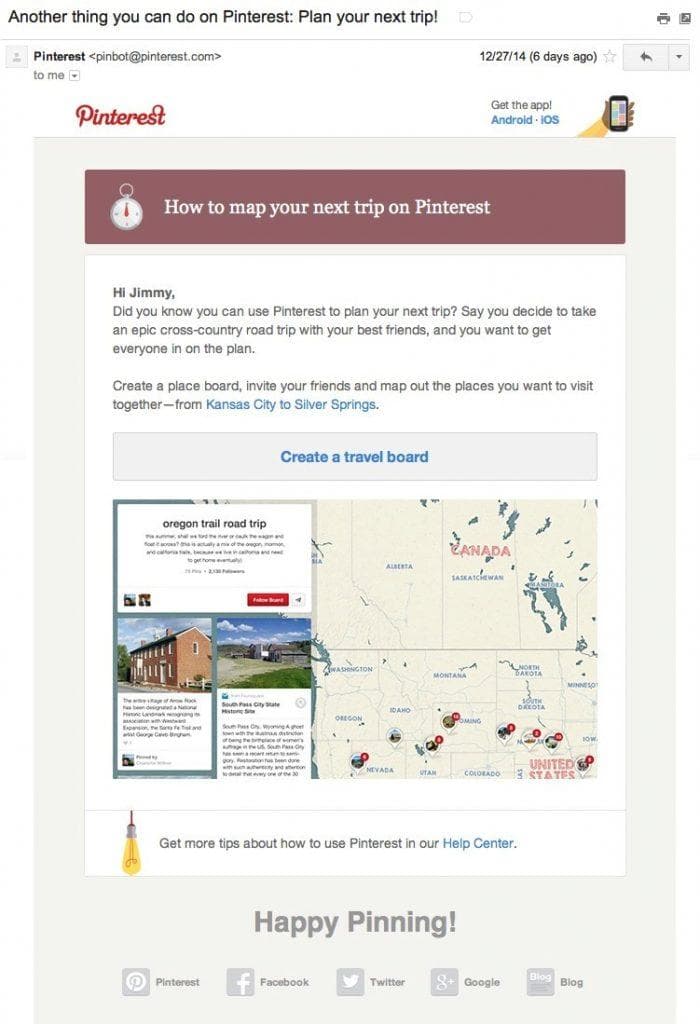
Source: StartupFlux
Pinterest can be used for many purposes, but planning a trip by creating a travel board is one of the more creative ones that users might not think of themselves, regardless of their level of knowledge about the platform.
Emails are an excellent way to deliver educational content that can be useful for every type of user, from beginners to advanced. Don’t miss out on the opportunity to do so.
Blog Posts
Having a business blog is a simple and effective way to share knowledge with your users and build your image as an industry expert.
But it’s not just enough to churn out a mediocre rehash of material from other sources and call it a day.
Users will quickly see through that approach and stop coming to your blog to educate themselves on the product and the industry.
On the other hand, creating quality educational content can bring more customers, retain existing ones, and build your reputation within the industry.
And you do all of it for free, as the team from Be Locally SEO points out.
When you freely offer consumers something beneficial, they perceive that you are investing in them and their interests.
You can use blog posts in various ways to educate your users.
For example, you can write articles about new features that essentially serve as a well-written guide to your product.
Heap, a digital insights platform, has a blog section where their writers create posts like that.
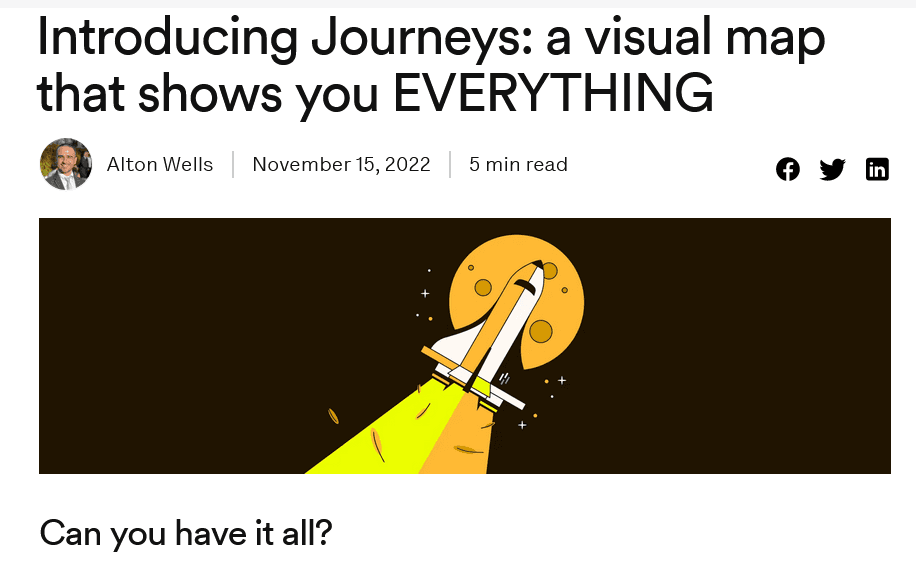
Source: Heap
On the other hand, you can write blog posts geared more towards educating your users about the industry your product belongs to and putting what you offer in the broader market context.
For instance, articles like the one below educate customers about the industry trends and connect that topic to Heap’s product.

Source: Heap
To summarize, educating your users with blog posts is a great way to turn attention to your product and assure them that it’s the right thing for their needs.
Social Media Posts
Using social media is nothing new when it comes to marketing your products. However, social media can also be very valuable for educating your customers.
In contrast to other types of educational content, social media can reach users that aren’t looking for education.
For instance, product documentation, videos, courses, and other types of content are very beneficial, but the user needs to seek them and engage with them actively.
On the other hand, users can stumble upon your social media posts, so why not make them educational?
That’s especially interesting when you consider how many people use social media. According to Backlinko, 93% of global internet users and 85% of mobile phone users are on social media.
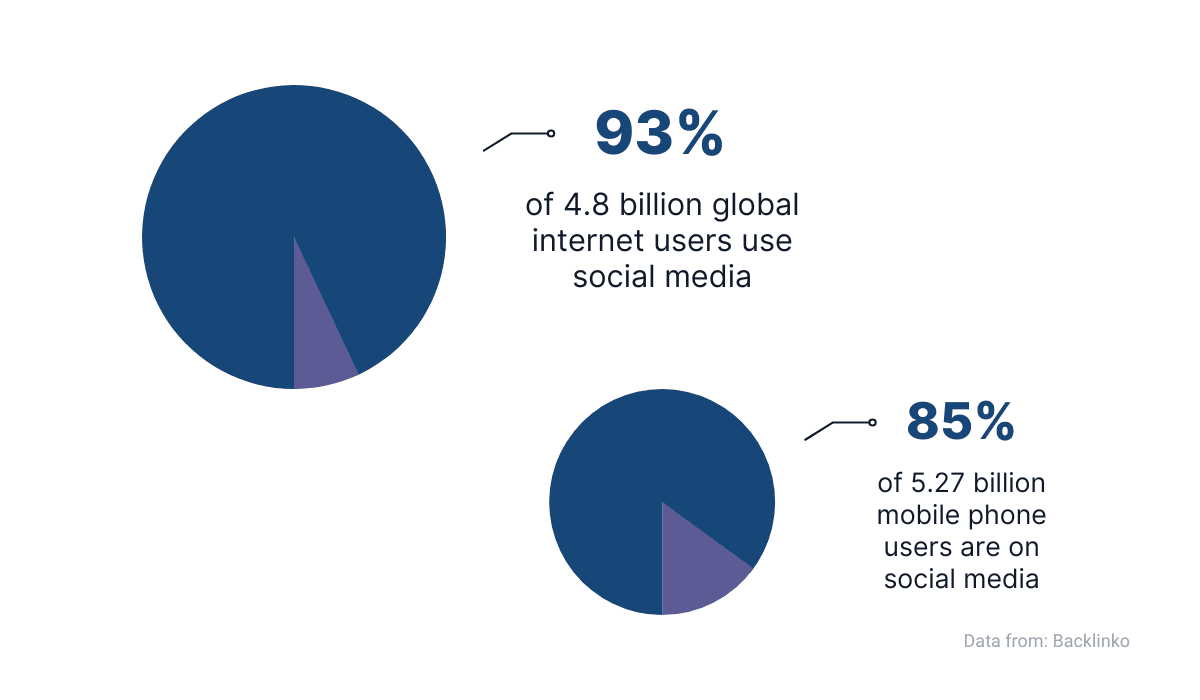
Source: Archbee
That’s a significant number of potential readers of your education content that you should definitely try to reach.
Of course, social media posts are best suited for straightforward and helpful advice about your product that users can read and absorb quickly.
For example, Mailchimp uses Twitter to post educational content.
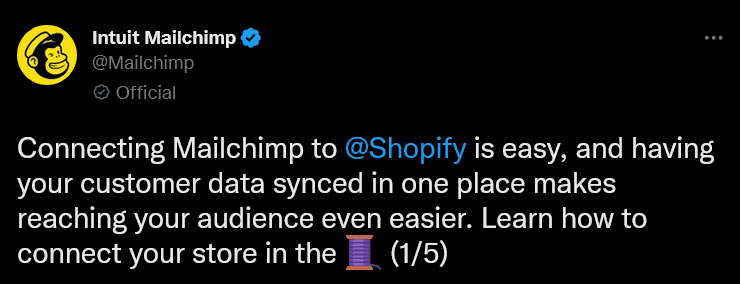
Source: Twitter
Because of Twitter’s limitations in post length, they usually create threads and parse advice into smaller chunks.
Therefore, the above post serves as an introduction to their content, and below, you can see the first step in the thread.
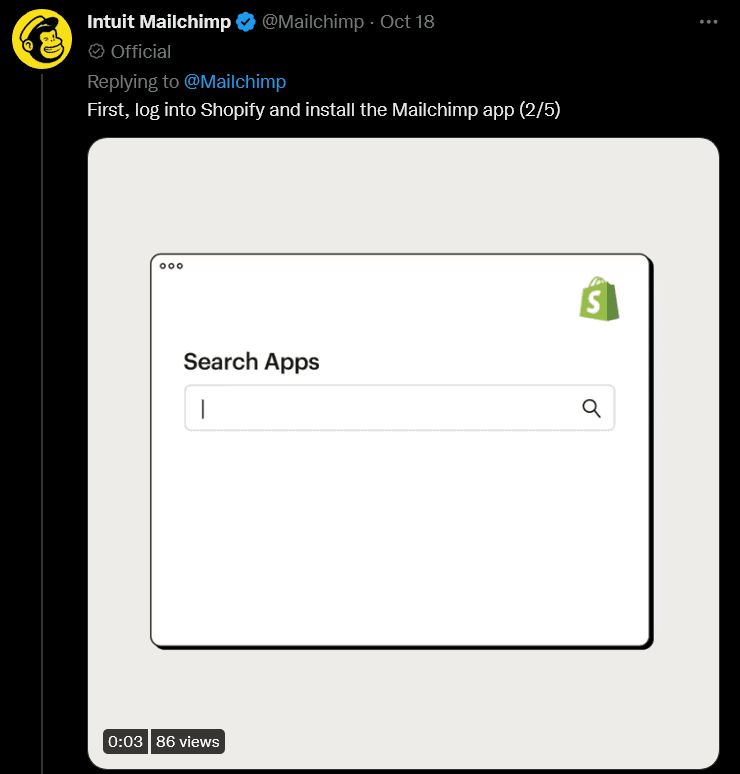
Source: Twitter
For customers, it’s a quick and easy way to learn something new about a product they use.
On the other hand, for you, it’s a small amount of content to make that could potentially reach a very large number of people, so it’s definitely worth trying.
Conclusion
As we’ve shown you in this article, educational content for your SaaS users comes in many shapes and sizes.
What you will predominantly create and provide them with is up to your preference, the industry, your product, and many more factors.
Regardless of that, you have plenty of options to choose from.
Whether you create in-product guides, product docs, videos, webinars, courses, emails, blog posts, or social media posts, they all have their advantages.
The key is committing to making high-quality educational content. When you do that, results will surely come.
Frequently Asked Questions
Because even great software can feel complex at first, education bridges the gap between sign‑up and success. Done well, it: - Shortens time-to-value and improves activation - Drives feature discovery and adoption (not just the basics) - Reduces support tickets and churn by building user confidence - Scales onboarding across segments and learning styles - Creates a consistent, self-serve experience 24/7 - Builds trust by showing how your product solves real problems Use a mix—in-product guides, documentation, videos, webinars, courses, emails, blog and social posts—to meet users where they are. The result: happier customers, better retention, and healthier revenue.



